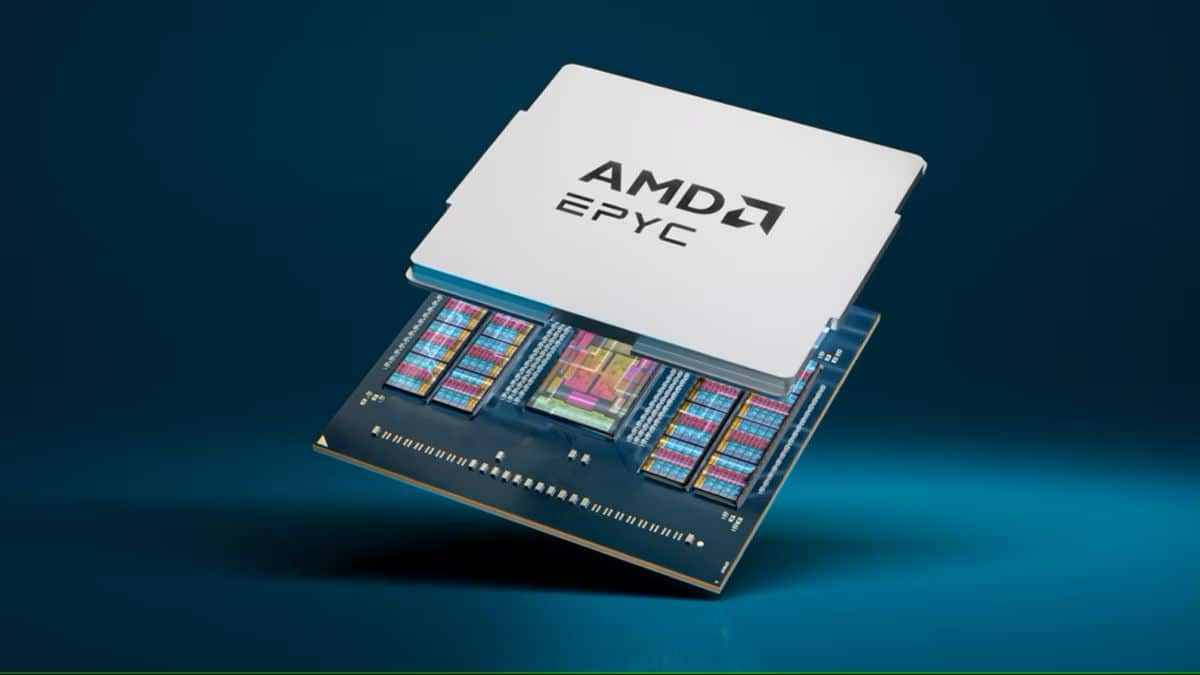The company AMD has announced the expansion of its x86 integrated product catalog with the introduction of new AMD EPYC Embedded processors.
The AMD EPYC Embedded 9005 processor series has been specifically designed for embedded markets, combining next-generation computing capabilities with optimized features to ensure greater longevity, reliability, and system resilience, in addition to facilitating the development of embedded applications.
Based on the “Zen 5” architecture, these processors offer superior performance and optimized energy efficiency, enabling industrial edge networking, storage, and computing systems to process data with greater speed and efficiency.
“AI-driven network traffic, the explosion of data storage requirements, and the expansion of industrial edge computing are driving demand for higher computing performance in embedded platforms,” said Salil Raje, senior vice president and general manager of Adaptive and Embedded Computing at AMD. “The 5th generation AMD EPYC Embedded processors deliver industry-leading performance and efficiency to embedded system customers, along with the long product life cycles and enhanced system resilience they rely on to design confidently and ensure continuous operations in demanding and always-on environments.”
Leadership in Core Density, Performance, and Energy Efficiency
The AMD EPYC Embedded 9005 Series processors are designed to power integrated systems for compute-intensive applications, with support for 8 to 192 cores integrated into a single socket. The industry-leading core density provides up to 1.3 and 1.6 times performance increases in data processing for networking and storage workloads, respectively1,2, making these devices ideal for network firewall and security platforms, storage systems, and industrial control applications.
The use of the new “Zen 5c” core architecture delivers higher performance with better energy efficiency, which translates to an estimated increase of up to 1.3 times in performance per socket3 and an estimated 1.3 times better performance per watt4 compared to competitors. The capability of up to 6 TB of DDR5 memory per socket and expanded I/O connectivity, supporting up to 160 PCIe® Gen5 channels with CXL® 2.0, enables increased storage capacity and high-speed data transfers for networking and storage applications.
Application-Specific Features
The AMD EPYC Embedded 9005 Series processors include an advanced set of integrated features designed to provide a robust, secure, and durable platform:
- Extended Longevity: To meet the longer product life cycle and operational requirements of embedded markets, the AMD EPYC Embedded 9005 Series CPUs provide extended product manufacturing support for 7 years. This helps system designers ensure long-term product availability and reduces redesign and qualification efforts. Additionally, AMD plans to extend the operational design life targets from 5 years in the current sampling of the AMD EPYC Embedded 9005 Series CPUs to 7 years for production SKUs, ensuring long-term product stability for embedded systems. These extended operational life cycle design targets are critical for embedded systems running mission-critical applications under harsh conditions, minimizing unplanned downtime, repairs, and costly system replacements.
- System’s Robustness and Security: Features include NTB (Non-Transparent Bridging) to enhance high availability in fault-tolerant multi-host configurations. NTB improves system redundancy and failover capabilities for networking and storage systems by allowing data exchange between two CPUs in active-active configurations over PCI Express (PCIe®), enabling continuous operation in the event of a failure. DRAM Flush enhances reliability in mission-critical storage deployments by helping to prevent data loss in the event of a power outage by flushing it from DRAM to non-volatile memory.
- Ease of Application Development: Integrated support for the Yocto framework simplifies embedded system deployments by allowing the creation of custom Linux distributions tailored to the customer’s system. SPDK (Storage Performance Development Kit) and DPDK (Data Plane Development Kit) enhance system performance by controlling data processing for networking and storage workloads in user-space drivers.
Industry Support and Availability
AMD is working closely with ecosystem partners and leading ODMs and OEMs, including Cisco and IBM, to bring the benefits of these next-generation embedded processors to market.
“We chose the AMD EPYC Embedded 9005 processor for one of our high-end firewall products because it delivers the high computing performance we need, from its scalability (up to 192 cores) to its high memory and I/O bandwidth,” said Lukasz Bromirski, Cisco’s Director of Product Management. “We know we can count on AMD, not only for its great performance but also for its quality and cutting-edge support and its consistent execution of the roadmap.”
“The IBM Storage Scale System 6000 is designed to deliver speed, performance, and reliability for demanding enterprise AI workloads,” states Matthew Geiser, Product Management for IBM Storage for Data, AI, and HPC. “One of the main benefits of the AMD EPYC Embedded 9005 processors is the introduction of redundant paths for high data availability and robust connectivity options, which will work exceptionally well with high-performance applications running on IBM Storage Scale System.”
The AMD EPYC Embedded 9005 Series processors are currently being tested with early access customers, and production shipments are expected to begin in the second quarter of 2025. The AMD EPYC Embedded 9005 Series processors come in the SP5 socket form factor, which is compatible with the previous generation of AMD EPYC Embedded 9004 Series, providing a straightforward upgrade path for customers.

